16 Top Safari Horses in Africa
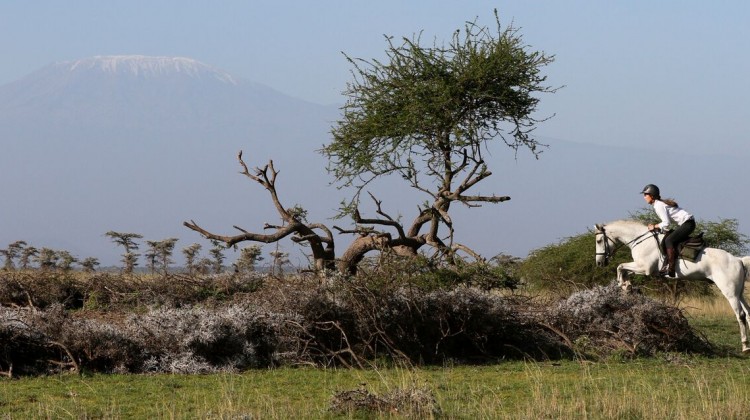
Meet the 16 best safari horses in Southern and Eastern Africa; from the brave, ‘rock’ Tsingtao who boxes at a charging elephant, to quirky camel jumping Fidelio, to internationally travelled racing star Bon Jovi, to Olympic eventers’ choice San, and the caring Rafiji who sensed her rider’s epileptic fit. Tales of a safari horses, told first hand, by their expert riding safari guides….
- Tsingtao the ‘lion’ who boxes elephants
- Fidelio the quirky ‘camel jumper’
- Royal Count (of Montecristo)
- San the Olympian eventers’ choice
- Whisky the ‘keen eyed’ polo horse
- Mzuri the ‘hungry’ horse
- Cape to Cairo the ‘brave’ chestnut mare
- Zulu the ‘dependable’ farm horse that you will fall in love with
- Anneman the ‘other man’ a willing horse with a lot of heart
- Mr Beam the Argentinian racehorse that went ‘absent without leave’
- One-eyed Caspian, the ‘wise sage’
- Intuitive Rafiji, who sensed her rider’s seizure
- Mfupi meaning ‘the small one’ in Swahili
- Zulu the stallion that lived wild with zebras
- Brutus the ‘mischievous and cheeky’ thief
- Bon Jovi the international racing ‘rock-star’
1 Tsingtao (stable name: Tau) Tswana for ‘Lion’
By Clare Morrell, stable manager, Wait a Little Horse Safaris, South Africa
Here at Wait A Little Horse Safaris, we have 40 horses of various shapes and sizes, colours and ages. All our horses are named after beer, and there are literally thousands of beers! One of our horses is called Tsingtao which is a Chinese beer, but his name has been shortened over the years to Tau, which is Tswana for ‘lion’. Never has a horse had a more appropriate name! Tau is 14.3hh, as brave as a lion. When Philip first saw him 15 years ago, he could immediately feel a potential bond and special character, but was told he was ‘difficult’ to ride. He returned without Tau, having bought some other horses instead, but couldn’t get the memory of this striking dun gelding out of his mind. He kept on nagging and nagging Gerti until she agreed to bring this un-rideable chap home – and the rest, as they say, is history! Tau has a special place in all our hearts, he is truly as brave as a lion, and what he doesn’t know about life in the bush you could write on the back of a postage stamp. Philip rode this wonderful little horse as lead for some years, and they had many escapades including Tau rearing up and boxing with his front legs at a charging elephant female – yes, rearing and boxing! (the elephant turned tail and ran.) But this little chap is also safe and gentle enough to carry children on safari, to be an excellent training partner for our young horses, a steady platform for photographers and to turn his hoof to show jumping. He hates being cuddled and in his book, being patted by a human is unnecessary and distasteful. The other horses in our herd have so much respect for Tau that when he walks in amongst them they all move out of the way, like the parting of the Red Sea. But in dangerous game sightings, he is a rock. I was riding him once when we got charged by lions. We were standing at the front grazing and giving confidence to Philip’s new lead horse, when a feisty lioness charged at us, growling and bearing her teeth. All the other horses jumped away because she came flying at us with her ears back and her front legs stretched out in front of her. Tau continued to eat, looked to the left at her flying towards him then put his head down and carried on munching! I didn’t even feel his muscles twitch….. I know everyone says they have a horse in a million, but we really do have him! If Carlsberg made horses, this is him! Probably (definitely) the best horse in the world! Back to Top
2 Fidelio, the quirky camel jumper
By Chyulu Smith, Ol Malo Riding Safaris, Kenya
Fidelio started his life as a stallion, cooped up in a dark stall on the pineapple plantation, only allowed out to serve the occasional mare. When the patrol ponies were sold off, this frustrated and spirited horse was bought, gelded and taught to jump, destined for the show jumping ring. However, his colourful temperament was often misunderstood and he went through a lot of riders, homes and show jumping poles! Chyulu and Fidelio’s partnership began five years ago – she saw not only his potential but also the need for love and patience and within a few months of enjoying some laid back Laikipia ranch life, with long gentle rides amongst game and grazing free on the plains with the zebra, he became the remarkable horse he is today. His talent for show jumping meant that he shot up through the grades but happily for Ol Malo, he has also proved to be brave, bold and fearless in the face of wildlife and other challenges that the African bush brings. We think that he is probably one of the first horses ever to jump over a camel! So enthusiastic is he about his party trick that he now considers any poor snoozing camel on the plains a possible jump and shoots off towards them in excitement! Back to Top
3 Royal Count, the ‘Count of Montecristo’
By Duncan, Okavango Horse Safaris, Okavango Delta, Botswana Royal Count is a thoroughbred gelding from Zimbabwe. Bred to race he has impressive blood lines, Full Coloured being one. He’s a big bay, forward going horse with a mane the envy of anyone who admires long, thick jet black hair. It is his great attitude to life that is his draw card, when you sit on him there is tremendous feeling of harnessed power – it is a fine line but he always listens although the energy is touch button light. Royal Count was stolen from us, led out his stable at Guma lagoon in the dead of night and galloped away. Over the next 10 days we did everything possible to find him but he had vanished into thin air. We followed his tracks until we lost them, searched by air and on the ground, and found nothing. We consulted a witch doctor who took his old dung and mixed it in a bag of bones and dried frogs (among other things!) and then declared the horse was still alive and not far away. I should have realised that still alive meant he was nearly dead. We printed a poster and offered a reward. Soon after this the police were given a tip about a “fresh” horse being ridden pre-dawn and last night in one of the villages. A midnight raid was organised and the thief was caught. The thief was taken to tribal court two days after the raid and imprisoned for stock theft for five years. Royal Count was hidden in the bushes behind his hut without food or water; the change in this horse was unbelievable, after 10 days he was skin and bone having been galloped into the ground. The thief had cut off his ears to disguise him and burnt his forehead in the hope that the new hair would grow back grey and give him a blaze. He had also been ridden without a saddle and had a large open wound on his back exposing his back bone. His belly and the insides of his thighs were covered with strange deep cuts probably the result of being galloped over thorn bushes – acacia Karoo which sliced him up. On top of this he was covered in diesel oil which made him look much darker and a lot of his hair had fallen out. Royal Count was almost finished, so depressed and flat I wondered if we would ever bring him back to his previous personality. Royal Count made a good recovery although it took time, his trust in humans was not lost and that was the first to mend.
4 San, the Olympic eventers’ choice
By Riana Fourie, African Horseback Safaris, Okavango Delta, Botswana San is ‘the’ safari horse, a big claim when he’s part of our barn of 48! Whether you are galloping through the flood plains alongside a herd of giraffe or jumping fallen leadwood as you weave through the enchanted forest, San takes it all in his stride. His calm, kind nature coupled with his forward going attitude has enabled many a rider to fully absorb all that the Okavango Delta has to offer. A young girl spotted San in the barn before an afternoon ride, she fell for his sweet temperament as he pricked his ears in his stall and asked to ride him, at 16hh he was much bigger than her 13.2hh pony at home. San looked after her for the entire holiday forming a true bond, standing quietly whilst watching hippos in the lagoon and cantering through the flood with the red lechwe. Now on her 5th return visit, San whickers every time she steps into the barn. He adapts to his rider and is certainly the eventers’ choice, both Pippa Funnell MBE and New Zealand Olympian, Sir Mark Todd singled him out. Mark said after riding San,
‘riding with African Horseback in the Okavango Delta ranks as one of the most exhilarating experiences of my life’.
5 Whisky, keen eyed polo horse
By Nicky Dyer, Borana Lodge Riding, Laikipia, Kenya
So, Whisky who is my horse, played polo in his youth, but is now a fantastic safari horse. He has brilliant eyes – spotting that herd of elephant three valleys away or the kudu just metres away but disguised by the darkening shadows. He has a good stride, can go at the back, the front or halfway down so it is easy to talk to guests on the route. He is brave about covering all sorts of terrain, muddy rivers, rocky escarpments, marshland, thorny scrub – he has some weird desire to go wherever I ask him, but is always on the alert, and therefore prepared for the unexpected bull elephant in the middle of the valley path. He loves being in the front at a canter so when he was once apprehensive about charging up a hill, I should have been forewarned. There was Linda, the rhino just over the brow of the hill, not waiting for any signal from me, he practised one of his polo turns and we were heading in the other direction before Linda had realised we were there – the other horses following his lead. He is happy to go right up to male giraffe, is eminently sensible with buffalo and lion, but can leap at a francolin bird fleeing its nest in the grass. Back to Top
6 Mzuri, the hungry horse
By Alison Mundy, Singita Grumeti Riding, Serengeti, Tanzania
Back in 2008 I was looking for a horse who would work energetically but be a sensible and safe ride. On a farm deep in the Free State in South Africa I came across a little dun, very thin who had been rescued from one of the townships and was to be used for cattle work and trail riding. He was perfect for what I was looking for, an easy ride but willing and energetic, despite his emaciated condition. We bought him and he flew to Nairobi and made the two day truck journey, everyone thought we were totally mad to see this scrappy little horse who looked more mule than horse. After four months of good feeding, de-worming and grooming, he was a changed horse, relaxed and happy and still a fabulous ride. The only snag….he eats EVERYTHING he can get his teeth on. Feed times are THE most important times of the day in his life and he literally screams with excitement when he sees his bucket. During safari we stop mid-morning for a leg stretch and picnic and to check the horses for rubs. Mzuri is able to untie himself and heads straight for the picnic basket and can unpack it. One memorable occasion he managed to eat a bacon, egg and pesto roll before we could stop him! He has a ton of character. I keep a sweetie bucket under my desk with treats for the horses. He often jumps out of the walled turnout field and goes off in search of better grass. But at 11am and 4pm he appears promptly at the office door for his treat. No worries about Mzuri running away when he knows where his food is. Back to Top
7 Cape to Cairo, not your typical chestnut mare
By Charlotte Outram, Offbeat Safaris, Kenya She came to Tristan about seven years ago as a five year old failed polo pony from South Africa. Having absolutely hated polo she quickly turned her hand to safaris and has proved to be one the bravest horses that Tristan and Jakob have ever ridden on safari ….she is particularly brave with lion. She is an amazing lead horse and is not fazed by anything and she truly does have a huge heart…and a huge jump! As they say, when you find a good mare you want for nothing else…she is the ultimate safari horse!
The story behind the photo – It was at the top of Leopard Gorge. The lioness had her cubs hidden in the rocks but one must have crawled out and got lost in some crevasse so she was looking for it. I guess she was too busy looking for the cub to even notice us. She completely ignored our presence. Back to Top
8 Zulu, the ‘farm horse’ that you will fall in love with
By Annie Waterer, Great Plains, Ol Donyo Lodge Riding, Kenya
Zulu is a South African Boerperd, a breed of horse that not many will know much about. Literally it means “farm horse” and they are perfect for Africa. These little horses had to be able to do everything from going to war with the Boer men, to taking the farmer out to check his crops and livestock, to escorting the ladies into town in the trap. Dependable, sensible, tough and pretty all at the same time! They have lines of Arab, Thoroughbred, Andalusian, Hackney and Cleveland Bay to name but a few. Zulu was imported to Kenya nearly eight years ago, and is the “perfect safari horse” – soft, comfortable, courageous and a lot of fun to ride! Every guest that is paired with him for his or her safari falls in love. You see a smile start to spread across their face within the first few minutes on board and by the end of the ride the usual response is “Wow! Can I take him home?”
9 Anneman ‘the other man’, the willing horse with a lot of heart
By Helen, Namibia Horse Safaris, Namibia
Anneman was found at age 18 months in a pitiful condition pulling a cart, totally emaciated. He was hobbled with wire and had a thin piece of wire for a bit which had torn his mouth badly. Andrew took pity on him and bought the scrawny creature, which the Damara owner called “Ander man” meaning “other man” in Afrikaans. However, the way the locals speak, avoiding hard consonants, his name came out as “Anneman” and it stuck. Andrew turned him out for three years to allow him to recover and grow, then backed him and took him straight out on trail without a hitch. Anneman proved to be the most exceptional guide horse – he fears nothing – stands down elephant, rhino and lion – please note, the wildlife in Damaraland, unlike Botswana and Kenya, is not habituated to mass tourism – they are wild animals in the true sense of the word. Andrew says he has never come across such a brave, willing and giving horse in his life – anything he is asked he does with gusto. Once, in the Swakop River, when bog and a massive reed bed cut off the loose horses from the string, Anneman, when asked, reared up to strike out at the wall of reeds to break a passage for the horses to get through. This is one of those horses of which the great horseman Ray Hunt said
“you could ask them to go up a lamppost or down a rabbit hole (not that you would), and he would attempt it”
A horse with a LOT of heart!
10 Mr Beam (stable name: Mr B) the Argentinian racehorse that went absent without leave
by Kate Holmes Ride and Walk Botswana, Okavango Delta, Botswana
At RAW Botswana’s Motswiri camp, all of our horses are special. They each have their own unique character and personality. The one that deserves a special mention is MR B – his official racing name from another life is MR BEAM. Having grown up as a racehorse in Argentina, he ended his racing career in South Africa. RAW Botswana purchased him from a farm in the Western Cape for a life in the bush and he began his long journey north to Botswana. This must be a traumatic journey for any horse, especially a thoroughbred as they do not generally have the calmest of dispositions! A few days after arrival in camp all mayhem broke loose when a herd of buffalo stampeded through the electric fence surrounding the horse paddock where the horses are turned out each day. Horses were scattered everywhere but by the following evening had generally found their way back to camp. Mr B, however, was heading the wrong way! He was tracked for 35 km from camp, but by day four it became clear that he had headed into a large area of thick bush, impenetrable to vehicles, with no water for survival at a very hot time of year. Sam, camp manager at the time, eventually concluded that the conditions were so extreme that the welfare of the trackers was in serious jeopardy, and took the difficult decision to call off the search. The bush is a harsh environment and has harsh realities – we all feared for and ultimately assumed the worst. Six months later, we received a radio call from the neighbouring concession saying they had seen a horse at one of the pans. Immediately, the expedition began to find our beloved Mr B! Sam and Ginny, the Stable Manager, aided by two of the best trackers in Botswana, our very own David and Cisco, went off to see if they could find any sign of the missing Mr B. At the first pan searched, Cisco who is a very well known bushman, announced that the tracks were at least two days old. After four hours of further searching Cisco found fresh tracks and was about half an hour behind the horse. Getting closer and with a lot of calling and food rattling around in a bucket, Mr B started to run, his head finally popping out of the thick mopane bush! It was a very moving sight and having given him a quick check over, it was evident that he was in remarkably good condition! A little on the thin side, he was still wearing his head collar and his coat was still glossy. He was led for about half an hour before it became clear that he would not make it all the way back to camp. A loading ramp was fashioned out of a termite mound, and the land cruiser was reversed up to it. Mr B didn’t need any encouragement and stepped straight onto the back of the Land Cruiser. Ten hours later he was back home in the stables in camp. Mr B continues to be one of our most loved and frequently ridden horses and to this day, we still can’t believe that he managed to survive for an incredible six months on his own in the bush!
11 One-eyed Caspian, the wise sage
By Gordie Church, Safaris Unlimited, Kenya
Caspian is without a doubt, one of Africa’s legendary safari horses. A light bay, thoroughbred cross gelding at 15’2hh tall, his early years were spent in the same game-country made famous in the book, ‘The Flame Trees Of Thika (Kenya), by Elspeth Huxley. His ancestors starred in the iconic film ‘Out Of Africa’, in which so many of our safari horses featured. Prior to joining the Safaris Unlimited string, he had an unusual career working on the vast pineapple plantations at night on security detail. I then acquired him for the equivalent of £200! Caspian is the only horse that has ever won the Safari Cup twice. This prestigious cup is awarded to one of our horses that complete the most number of safaris in any given year. In his lifetime with me, he must have covered well over 10,000 miles in the bush. He never missed a safari and was my lead safari horse for ten years. Despite being blind in one eye, he showed incredible courage in big game country, was fearless with lion, and never hesitated to swim the Mara River with all its crocodile and hippo. He is now retired at age 25, at home on our ranch, where he mentors the young horses, envious of his legendary status, in our stable. Despite his life-long career, he is still totally sound, without a single blemish on any of his legs. He’s the top safari horse in Africa and that is quite a feat in a horse riding company that has been in business for well over 40 years.
12 Intuitive Rafiji, who sensed her rider’s seizure
By Fred, Ant’s Nest, Waterburg, South Africa
Rafiji is one of our most trusted horses at Ant Nest, a caring, all-rounder, suitable for beginners through to the experienced rider. At Ants we always knew he was a special horse but didn’t realise just how special until one extraordinary day. It was a beautiful summer’s day, one of our guides, Fred, had led a ride of five guests with a backup guide over to our other lodge, Ants Hill. They stopped for a rest and a quick drink before setting off on their ride home to Ants Nest. Fred began a nice steady canter, checking behind him to make sure everyone was okay, he realised something wasn’t right, the lady riding Rafiji behind him started to slow down. Fred stopped the ride and asked what was wrong and why had she slowed down? To which the reply was, I don’t know! Rafiji just didn’t want to move and they couldn’t understand why. That’s when it happened, when Fred checked behind him again the lady’s whole body pulled stiff and her eyes rolled over to a deathly white colour. Rafiji stood dead still while his rider lost all function and started to slide off the saddle. Her left foot was caught in the stirrup and before he knew it Fred was off his horse tending to her, she was having a seizure. All the other guests jumped off their horses to see what was happening, no one thinking of holding their horses and everyone standing around the shaking body on the floor. The lady came round after about a minute and they looked around, the horses had made a circle around them almost in a caring protective way. That day I realised that horses are probably one of the most remarkable characters in this world. If Rafiji hadn’t been intuitive and realised something was wrong with his rider and stopped, the situation could have been much worse. Rafiji practically saved his riders’ life. Back to Top
13 Mfupi, ‘The Small One’ in Swahili
by Kate Ross, GoWild Africa, Kenya Olepangi, our lodge at GoWild Africa, is home to 27 horses which can roughly be grouped into 3 distinct ‘tribes:’ the 16 safari horses, 7 polo ponies, and 4 children’s ponies who roam freely around the farm. Stabled among the predominantly Thoroughbred safari horses in a lovely courtyard of loose boxes is Mfupi.
Roughly translating to ‘the small one’ or ‘short’ in Swahili, Mfupi (pronounced Foo Pee) is arguably of a different tribe altogether. He came to GoWild from Naro Moru with 7 other safari horses, however prior to that he belonged to a herd of wild ponies roaming the Kundudo Mountain in the Oromia region of Ethiopia. The Kundudo Horse, as they are known, are the oldest known feral horse population in Africa and the last of the wild horse herds in East Africa. With good looks and confirmation Mfupi was presumably captured to make a riding pony, however his sensitive and nervous nature in the stable indicate that the transition from wild pony to domestication was not always easy. With care and routine here at GoWild, Mfupi the Kundudo horse is now one of our best safari horses and very much part of the tribe. At around 14.2hh he rides much bigger and is a forward stepping, fun safari ride with a fan club of previous guests requesting to ride him again! We’ve had requests that he even have his own Facebook page! Now in his early teens ‘The Small One’ is a big character and an absolute pleasure to have at GoWild. Just don’t try and catch him in the field. He’s got great evasion tactics! Back to Top
14 Zulu, the stallion that lived wild with zebras
By Louise Carelsen, Limpopo Valley Horse Safaris, South Africa Zulu, a 15.2hh black stallion, was a fantastic bush horse. He was Cor’s guide horse for two years after having lived wild with the zebras for the previous two years. He was let loose during the floods of 2000 and didn’t find his way back. Later in 2003 he was spotted by some horse safari guests and people on game drives. Zulu was eventually caught when it got very dry in the bush with some horse cubes and a noose. He was ridden back to the stables the same day, still in fantastic condition, lean and fit, he was able to start working quite quickly. Cor says that when game watching zebras with guests Zulu would still call to them. He was a wonderful horse to learn about the bush on as he would pick up on things happening, just like a wild horse. Otherwise calm and slightly aloof, he was a very pretty little horse. Sadly he died a few years ago, but was a brilliant safari horse.
15 Brutus, the cheeky thief
By Mandy Retzlaff, Mozambique Horse Safaris, Mozambique
The elders sat under a tree The chief sat on a chair I was perched upon a stone There was tension in the air The secretary firmly said and the chief had to agree This meeting would go ahead Once I showed them my money The culprit of this serious crime did not show much regret He flicked his tail from time to time and was not in the least upset Brutus is so very cute A big brown furry ball He had bent his head to eat a shoot but then he ate them all Of the cultivated crop There was very little left They could not get him to stop so they accused him of theft The chief and I agreed a price Our meeting was concluded Everyone was very nice Although their fields were denuded Brutus was unaware Of the huge expense I am sure he does really care but his appetite is so immense
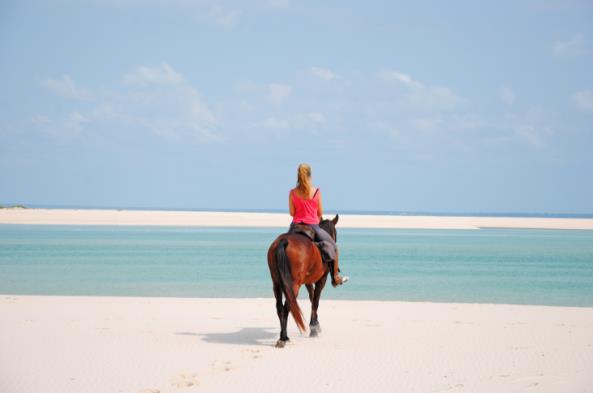
Brutus looking out to sea, Mozambique Horse Safaris, Mozambique
16 Bon Jovi (stable name: Bonj), the international racing rock-star
By David Foot, Ride Botswana, Okavango Delta, Botswana
We believe Bonj can lay claim to the most experienced safari horse in Africa as there cannot be many horses that have worked on safari in three different countries – Zimbabwe, Malawi and Botswana – and travelled as many kilometres in between! Off the Harare race track Bonj began his safari life with Carew Safaris in the Mavuradonha Wilderness in Zimbabwe. Sadly, soon after his arrival there, the political situation led to the closure of Carew Safaris and, along with seven of his equine companions, Bonj made a 1,800km journey northwards through Mozambique and onto Malawi. En-route, after an overnight rest in Lilongwe, Bonj decided he did not want to go back in the truck, instead throwing himself over in a sickening backwards somersault which resulted in crushed withers. With the reassurance that many horses recover from this injury, and after eight weeks recuperation in Lilongwe (and three days of tempting him into a horsebox), he continued his journey to the Nyika National Park in the far north of Malawi. Here in the cool mountain air he settled into life as one of the most popular in David and Robyn Foot’s string of safari horses. Forward going, comfortable, sure footed, calm – the perfect safari horse. But soon it was time to move again, in what would be the longest journey he would take! With 33 of his companions, he took two days to be ridden out of the Nyika National Park to the nearest town, where he was once again loaded onto a truck as far as Lilongwe for seven week stint in quarantine before a 2,000km journey through Zambia to the Okavango Delta in Botswana.
En-route he experienced mile after mile of some of the largest pot holes in Africa, saw in the distance the smoke from “The Smoke that Thunders” (Victoria Falls) and crossed the mighty Zambezi River on a ferry. After a one week rest in Maun, the gateway to the Okavango Delta, it was time to follow his 16 companions from Malawi on a two day ride into this water wonderland. This was going to be a tough challenge for him as he had always been rather nervous of water after being stuck in a Nyika bog for over 12 hours. And after six months of safari work in the Okavango he decided there was just too much water and it was just too flat for his liking after the life he had enjoyed in the mountains in Malawi. So, a two day ride back to Maun began. But after the elephants, buffalo and giraffe of the Okavango, what a fright it was to see a donkey up close!
Now, at 18 years of age, Bonj has very happily settled on the edge of the Thamalakane River just outside Maun from where he takes regular trips to the Kalahari on the most spectacular safaris along the edge of the great Makgadikgadi Pans. And being off the Harare racetrack he still manages to retain the “yellow head collar” for winning every gallop across the vast white pans – some of the safest riding ground in Africa.
We would love to hear from you, no matter how early in the planning process you might be for planning a riding safari in Africa. We’re passionate about Africa and would be happy to chat about creating your tailor made safari. Please get in touch with me and my team at Aardvark Safaris. Back to Top
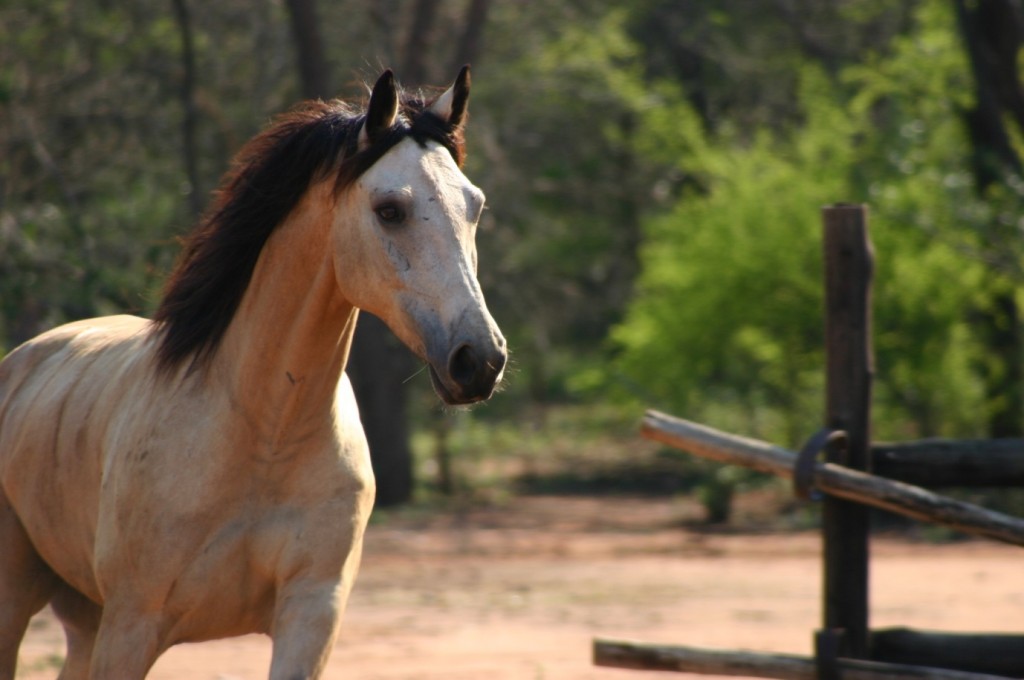
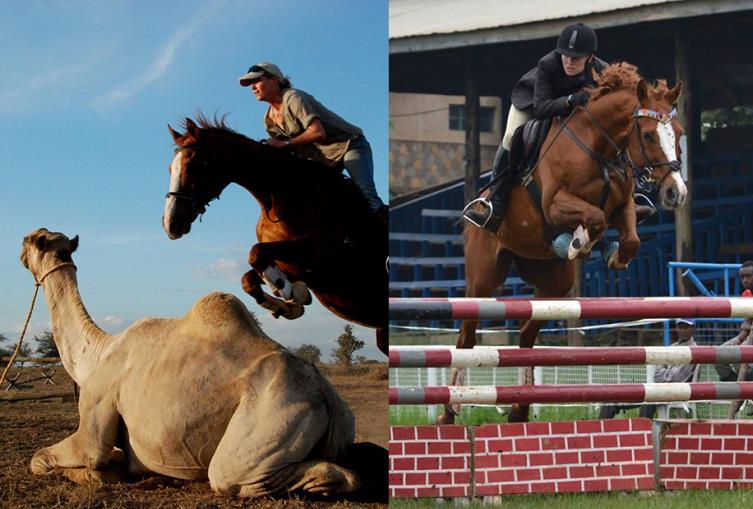
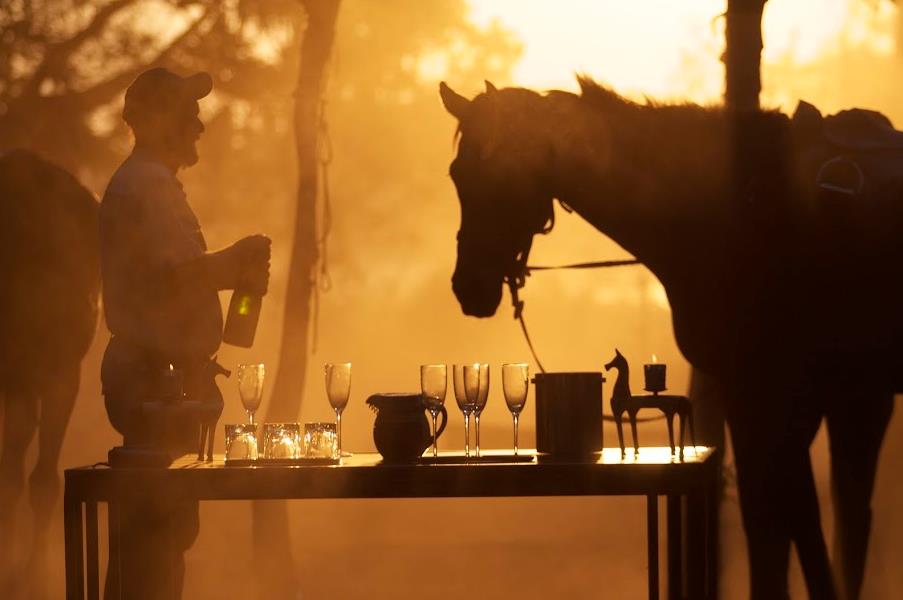
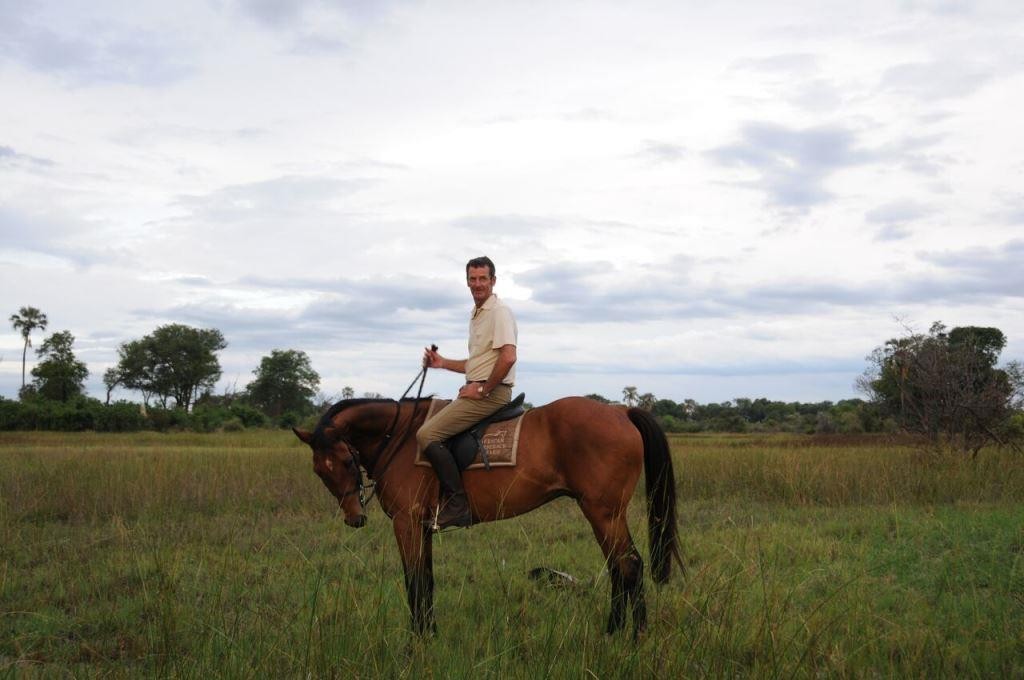
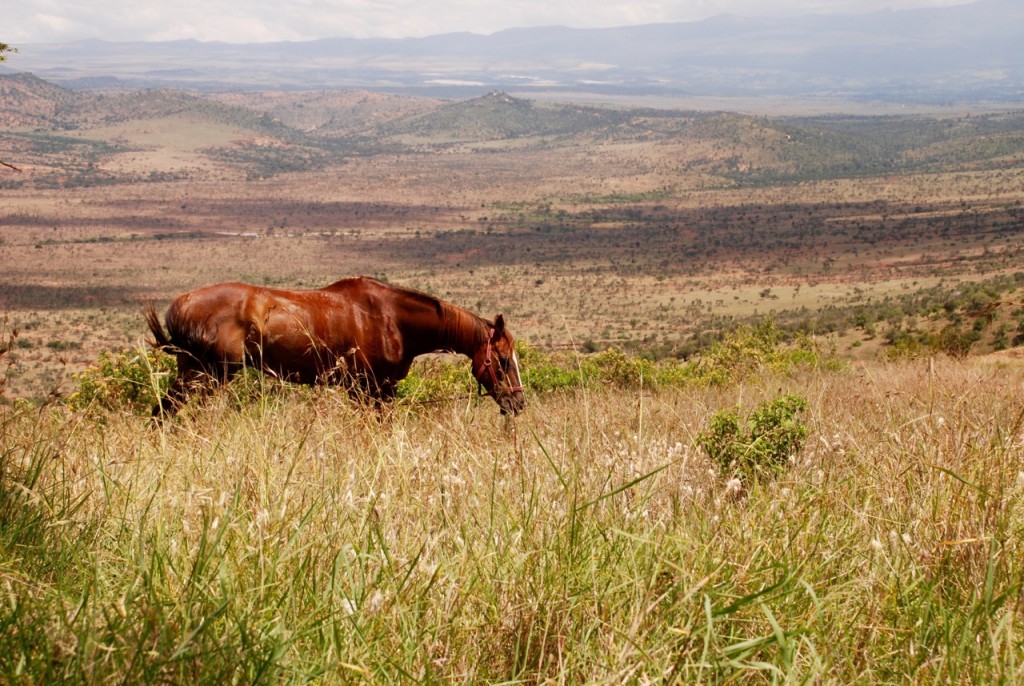
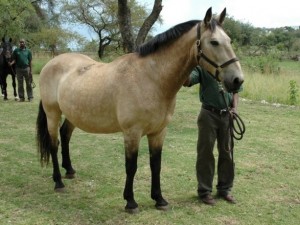
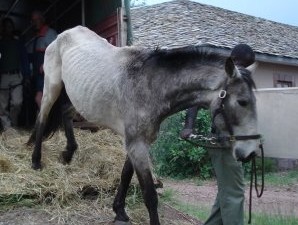
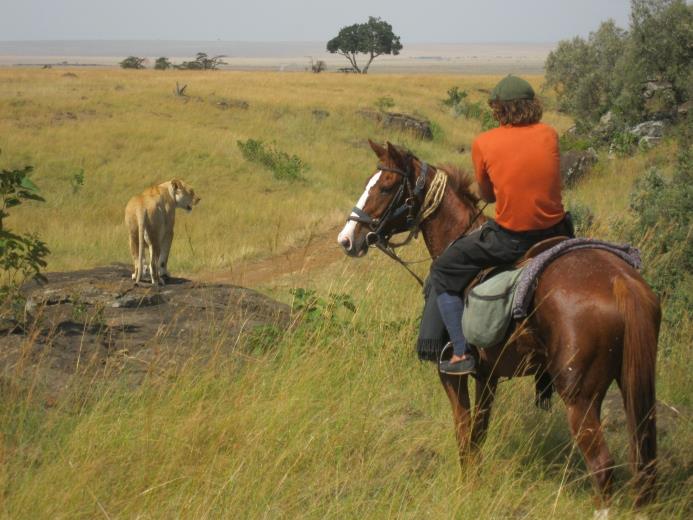
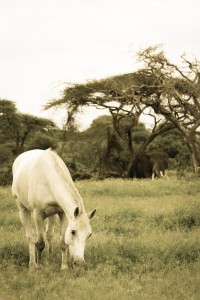
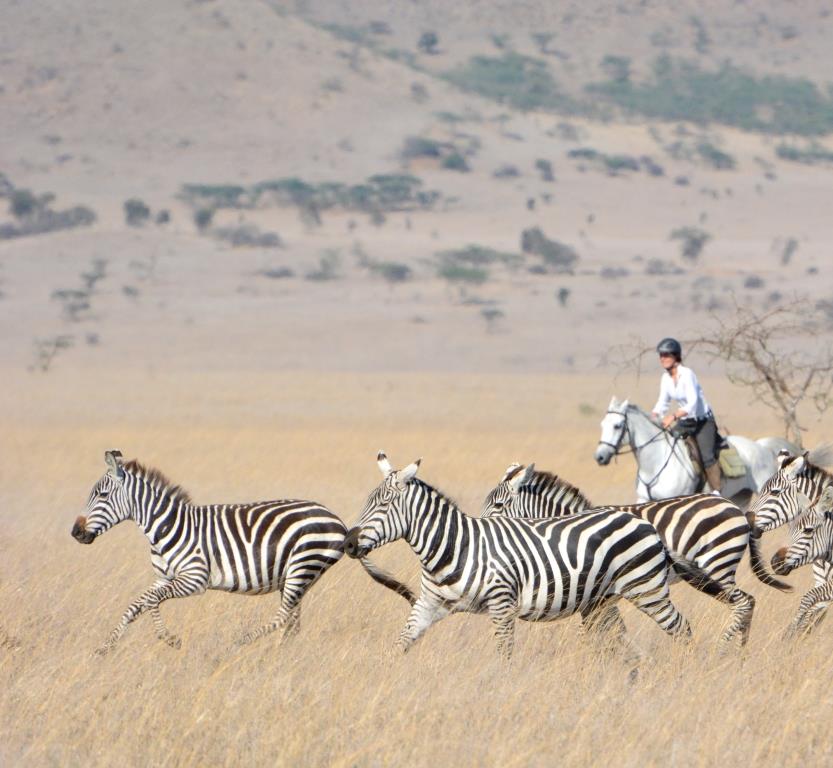
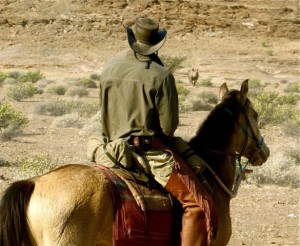
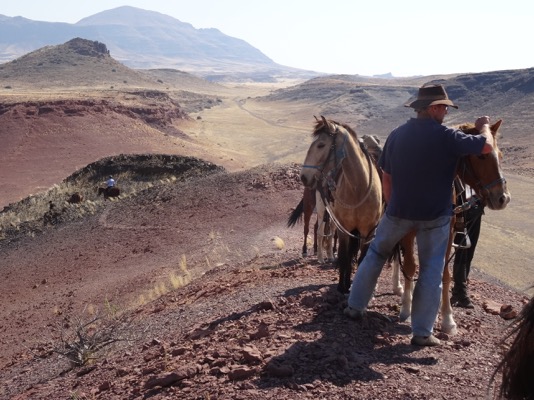
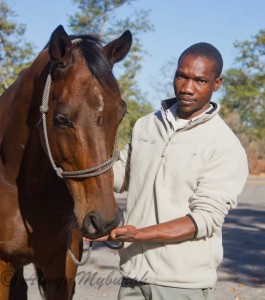
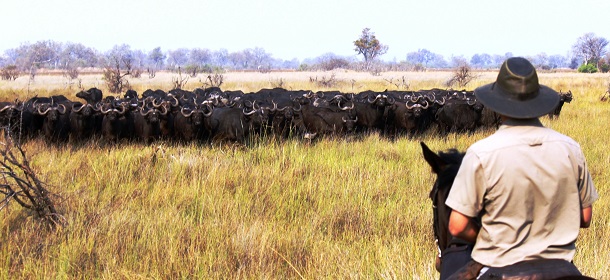
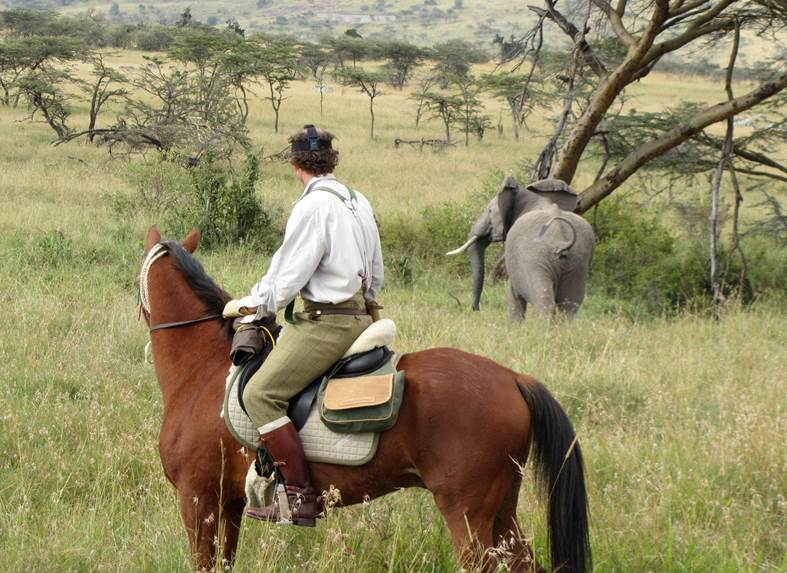
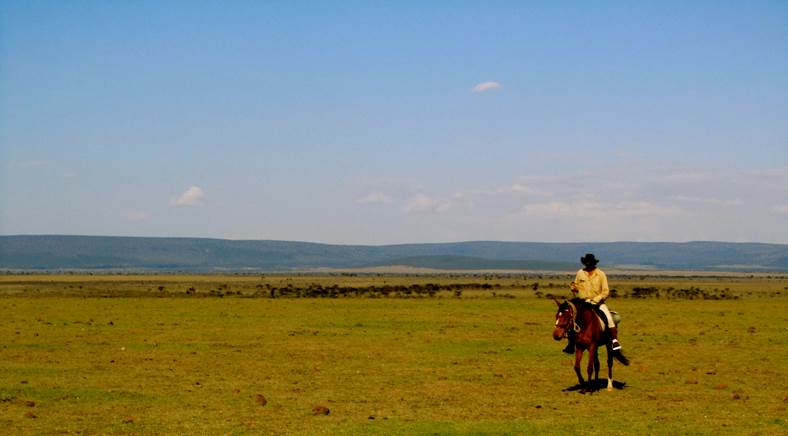
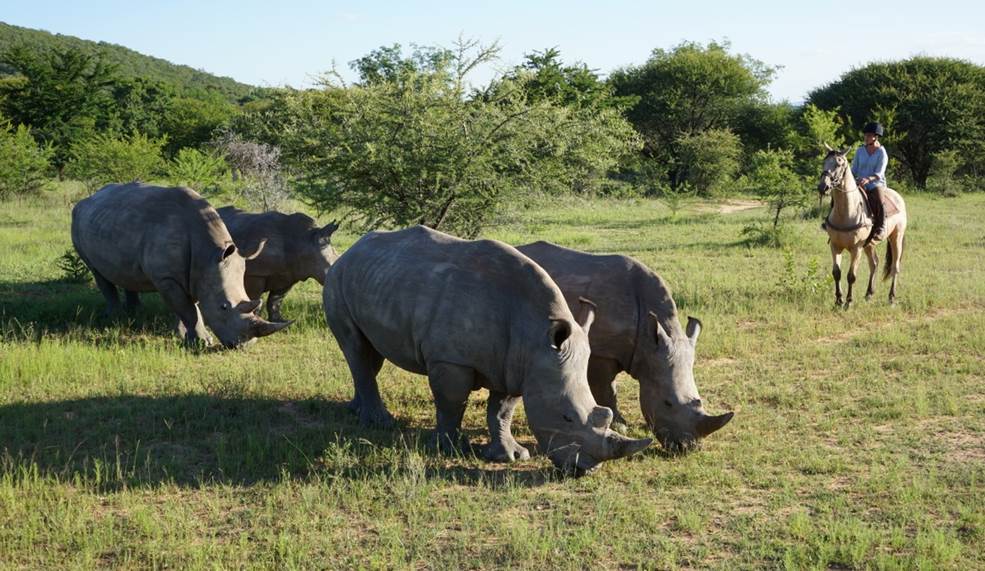
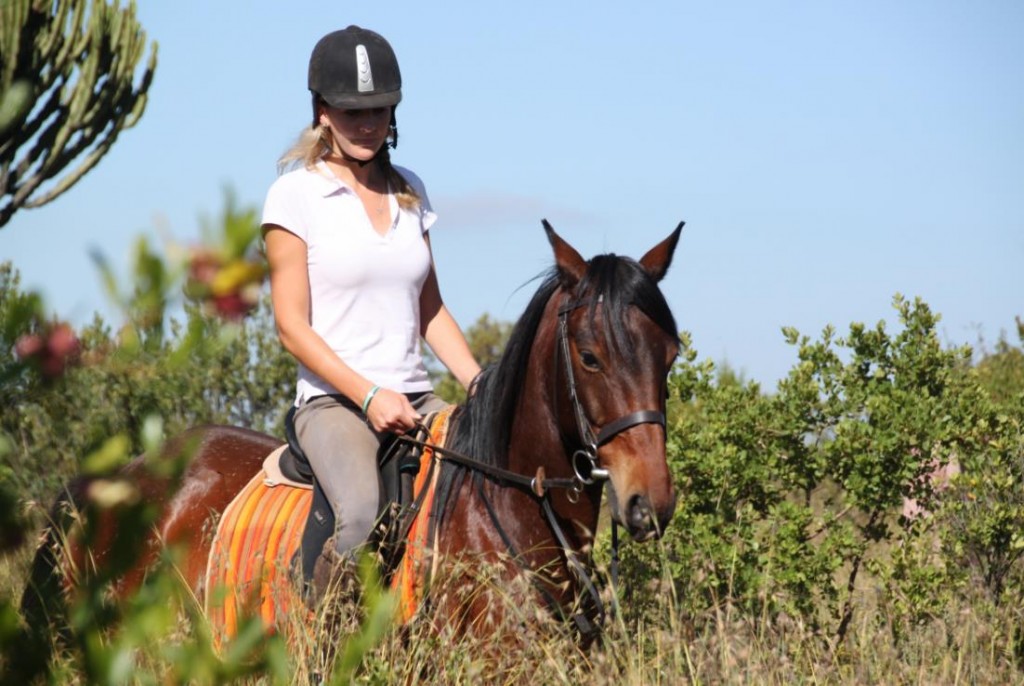
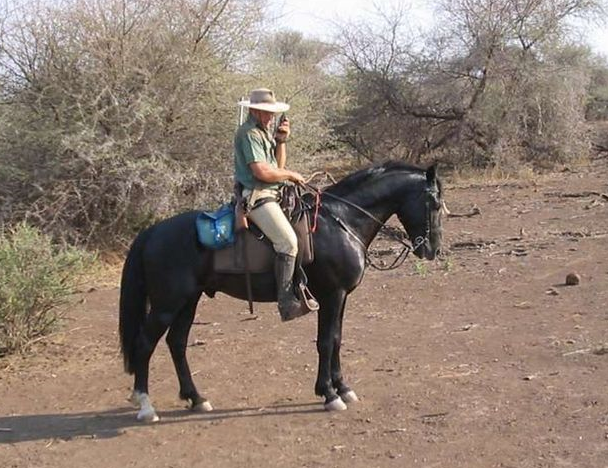
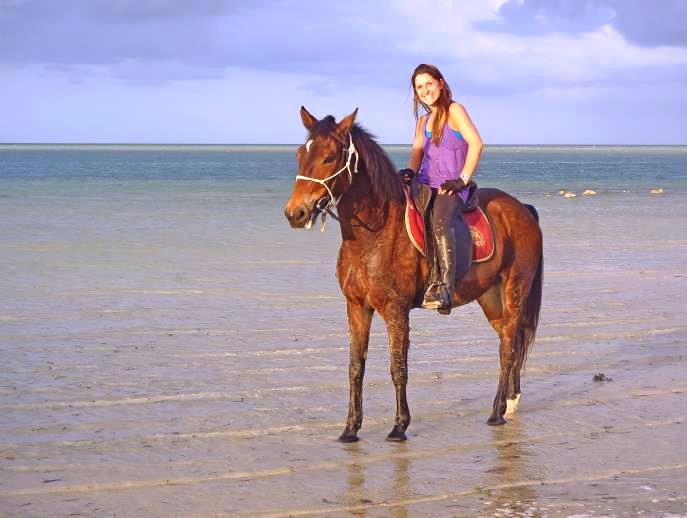
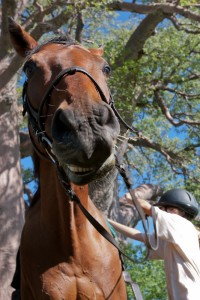

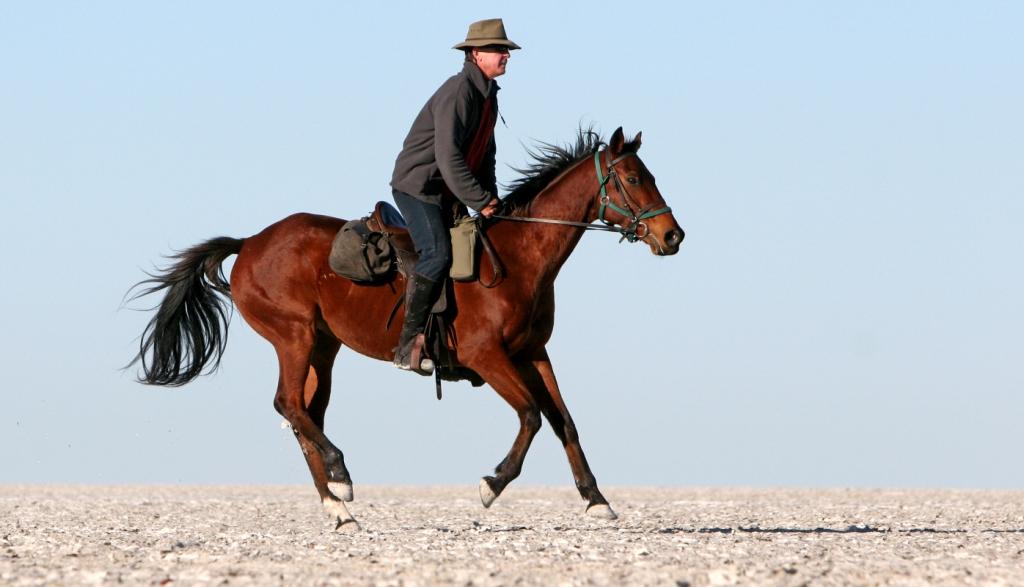
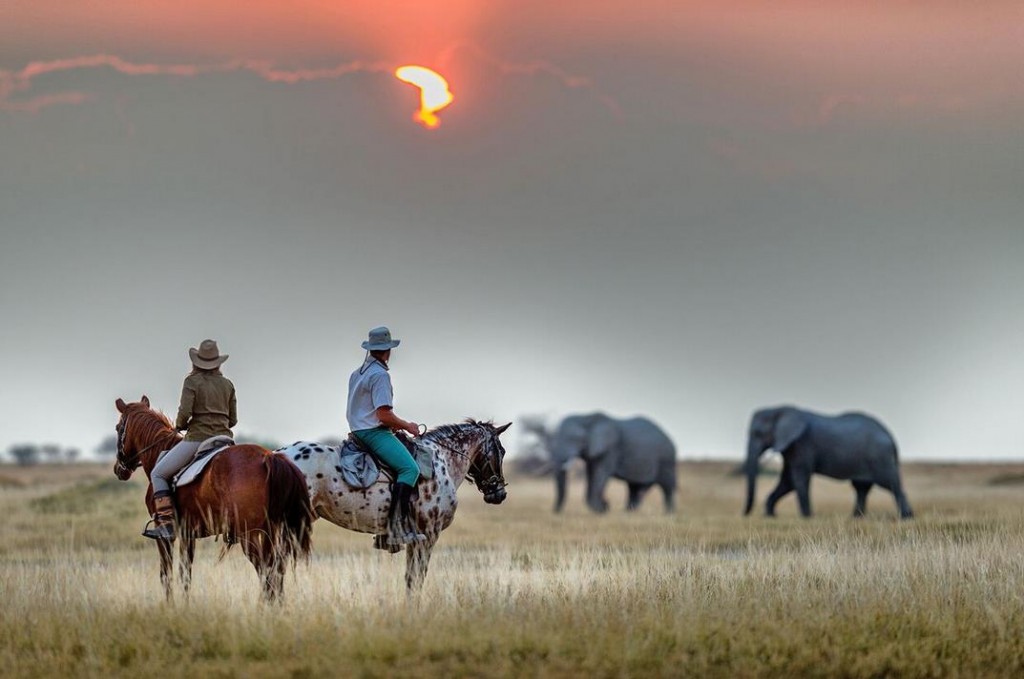
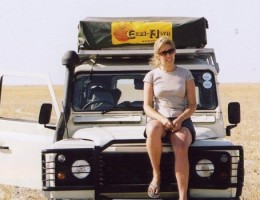
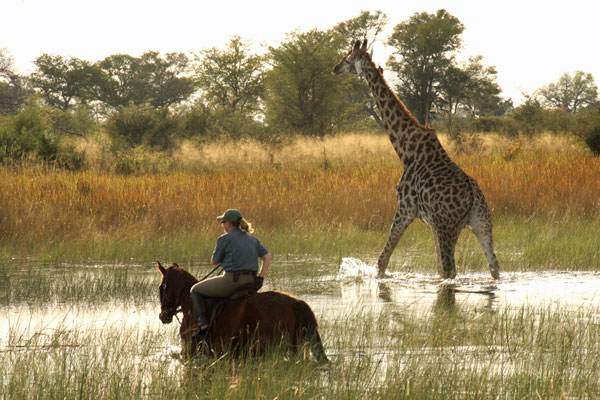
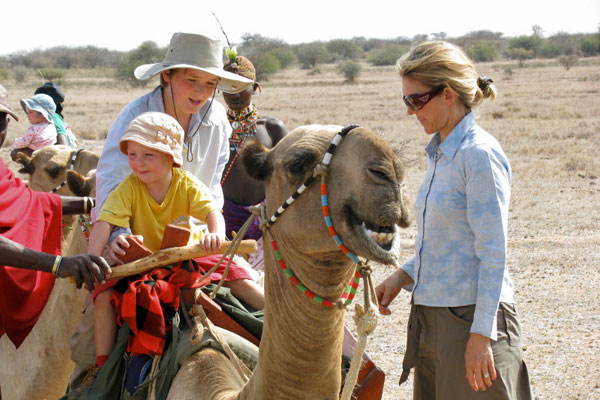 Camel safari, Kenya, Laikipia,
Camel safari, Kenya, Laikipia, 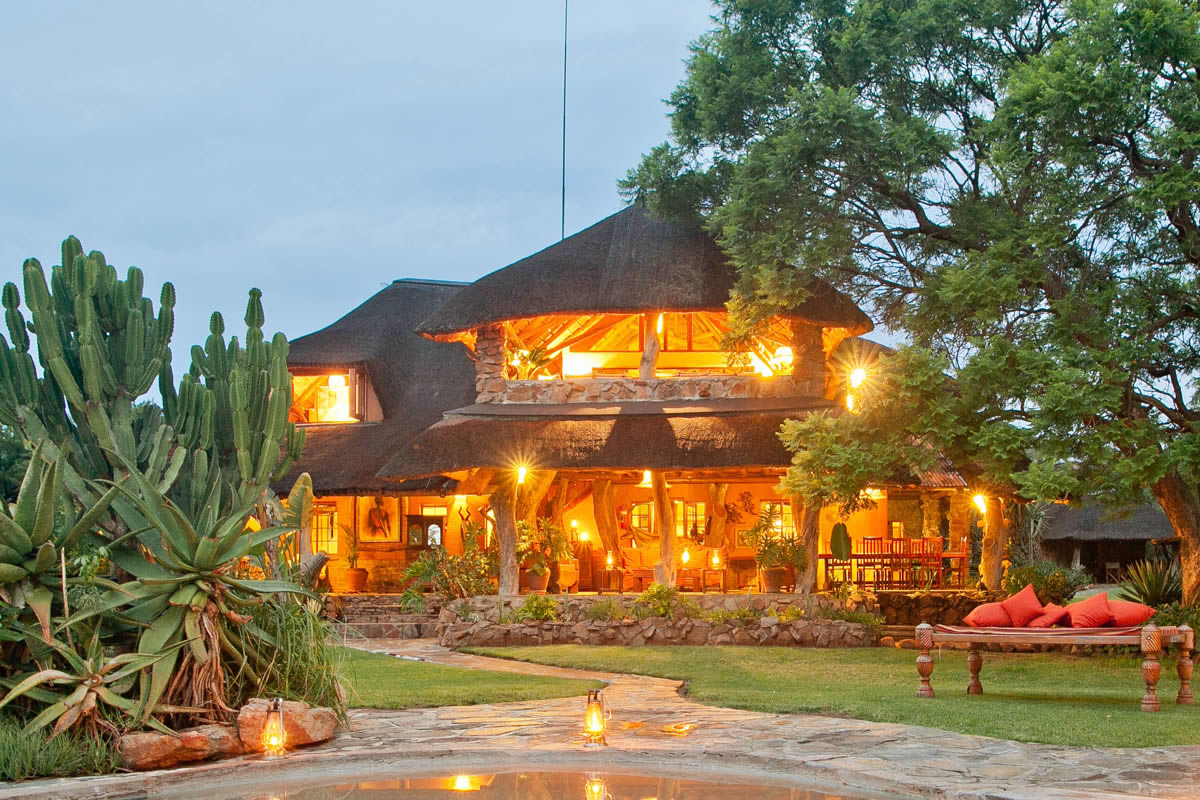 Luxury safari accommodation Waterberg, South Africa,
Luxury safari accommodation Waterberg, South Africa, 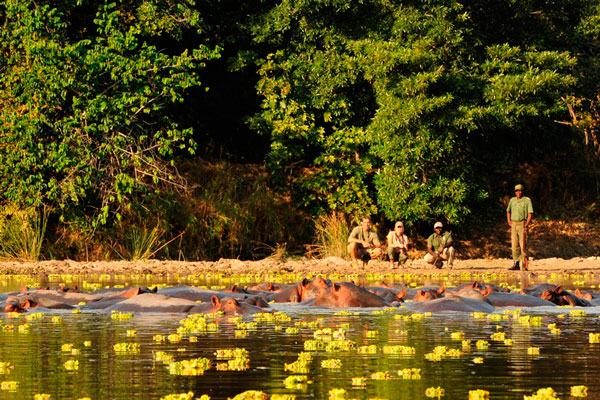 Hippos on a walking safari, South Luangwa, Zambia,
Hippos on a walking safari, South Luangwa, Zambia,
Leave a Reply